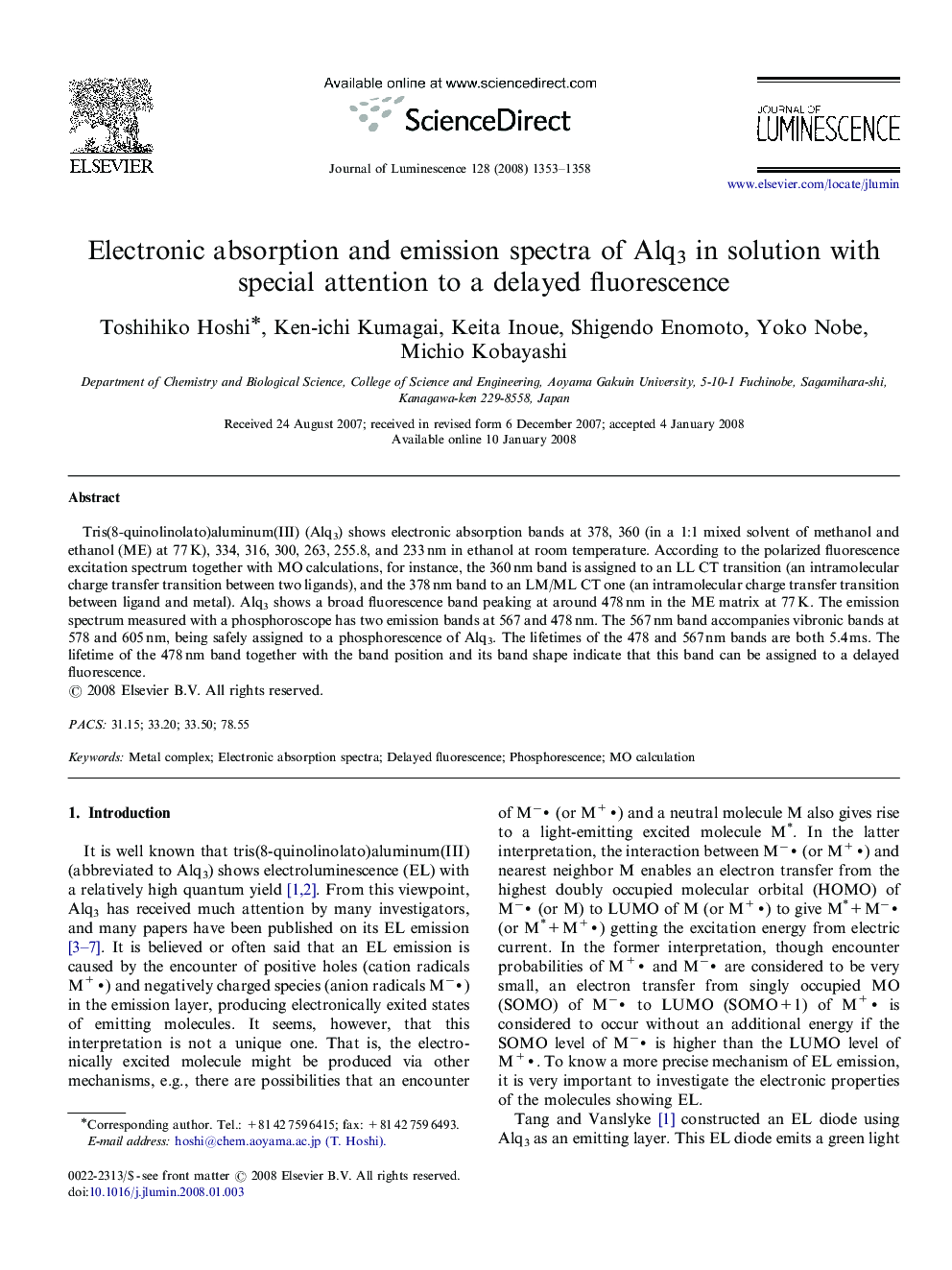| Article ID | Journal | Published Year | Pages | File Type |
|---|---|---|---|---|
| 5403258 | Journal of Luminescence | 2008 | 6 Pages |
Abstract
Tris(8-quinolinolato)aluminum(III) (Alq3) shows electronic absorption bands at 378, 360 (in a 1:1 mixed solvent of methanol and ethanol (ME) at 77Â K), 334, 316, 300, 263, 255.8, and 233Â nm in ethanol at room temperature. According to the polarized fluorescence excitation spectrum together with MO calculations, for instance, the 360Â nm band is assigned to an LL CT transition (an intramolecular charge transfer transition between two ligands), and the 378Â nm band to an LM/ML CT one (an intramolecular charge transfer transition between ligand and metal). Alq3 shows a broad fluorescence band peaking at around 478Â nm in the ME matrix at 77Â K. The emission spectrum measured with a phosphoroscope has two emission bands at 567 and 478Â nm. The 567Â nm band accompanies vibronic bands at 578 and 605Â nm, being safely assigned to a phosphorescence of Alq3. The lifetimes of the 478 and 567Â nm bands are both 5.4Â ms. The lifetime of the 478Â nm band together with the band position and its band shape indicate that this band can be assigned to a delayed fluorescence.
Keywords
Related Topics
Physical Sciences and Engineering
Chemistry
Physical and Theoretical Chemistry
Authors
Toshihiko Hoshi, Ken-ichi Kumagai, Keita Inoue, Shigendo Enomoto, Yoko Nobe, Michio Kobayashi,
